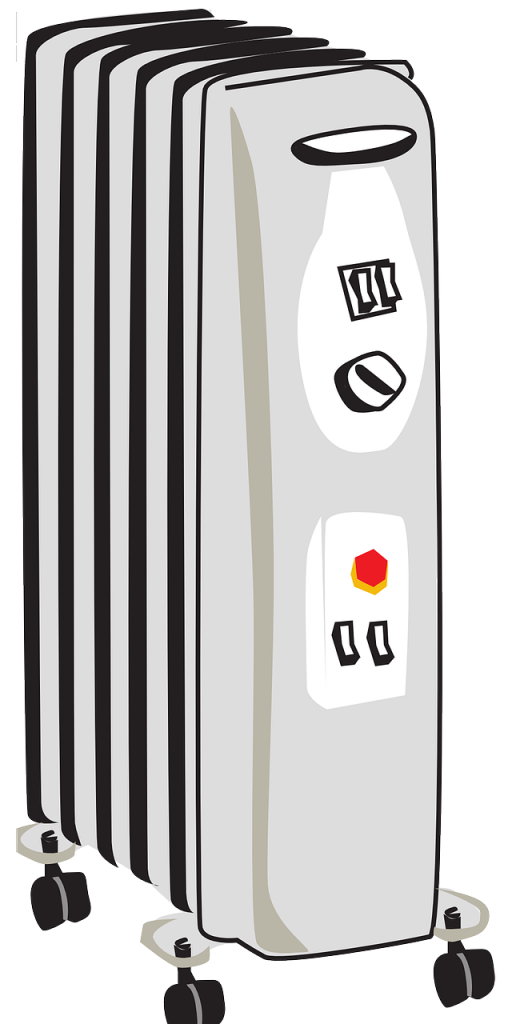
Did you know that space heaters actually save you money? Most people knock the tiny heaters and rely on central heating, but that’s not always the wisest choice.
In small spaces or rooms, space heaters work better than central heat. And when it comes to supplemental heating the heaters make the most sense for your comfort and your wallet.
This, among other things, make the heaters perfect for your office. You don’t need industrial heating systems to stay warm at work this winter.
So with that in mind, we’re bringing you our guide of how to select the best space heater for your office.
Types of Space Heaters
The first step in selecting the best space heater for your office is understanding the different types of heaters available. Each type has its pros and cons, which means the “best” choice will probably vary.
Let’s take a look at the three main types of heaters you’ll shop for…
Radiant Heaters
These heaters warm objects, rather than the air in the room. The heat “radiates” from the unit which warms whatever surrounds the heater.
These heaters warm very quickly, but also come with some safety concerns. It’s crucial to keep flammable objects far away from radiant heaters. Even long carpets are a concern.
However, used correctly radiant heaters are safe and efficient in warming even larger rooms. When you need heat quickly, they’re hard to beat.
These heaters commonly warm metal coils with electricity to create heat.
Convection Heaters
Convection heaters differ from radiant heaters in that they warm the air in the room, rather than the objects.
The heating elements in these heaters vary, but water or oil are often the energy source.
They work on the principle that warm air rises and cold air settles (think your convection oven), and can also feature an oscillating fan to distribute heated air.
The air warms and circulates throughout your office based on the principle of convection. So while these heaters take longer to warm an office, they create “even” heat.
Convection heaters work best in offices with good insulation. After warming the office the heater can turn off and let your insulation trap the heat.
Micathermic Heaters
Micathermic heaters are a combination of radiant and convection heaters, though with their own unique twist.
The heaters work through heating what’s called a mica stone. The heating element (powered most often by oil or electricity) heats the stone, which then radiates electromagnetic rays.
The principal works similarly to convection heaters in that air circulates through the heater based on air currents.
However instead of heating the air, they actually heat the objects in your office, very similarly to radiant heaters. Objects heated by the electromagnetic rays then warm the air.
These heaters are also very energy efficient. They often feature a thermostat and “eco” modes that conserve energy and selectively heat the mica stone.
Heat Production vs. Room Size
Once you have an idea of what type of heater you’ll need, you can move onto choosing one based on your individual situation.
The first thing to look at is your office size. Is this a large office? A small office? A home office?
Each type of heater works best for specific situations.
Radiant heaters work well in smaller spaces, while convection heaters tend to work best in larger areas.
Though as we mentioned, without good insulation a convection heater loses much of its appeal.
You can always buy more than one radiant heater to make up for this problem or invest in a micathermic heater.
As a rule of thumb, multiply your office’s square footage by 10 watts per square foot. Then, multiply that number by 3.41 to get the total BTUs you’ll need from your heater.
Noise
Next on the list of important considerations for your office space heater is its noise level. While some heaters are perfectly silent, others feature fans that make significant noise.
Radiant heaters are often quiet but sometimes emit a “hum” from the heating element. Likewise, convection heaters are quiet in theory, but models with a fan can create significant noise.
Micathermic and convection heaters without a fan make the least noise of typical space heaters.
The mica stone radiates heat silently, while pure convection heaters rely only on natural air currents to warm your office.
Safety
Lastly, part of shopping for the best space heater for your office is understanding the safety each type of heater offers.
Chances are your heater will become an afterthought during the workday. No one keeps tabs on what’s just another passive object in the office.
Radiant heaters are the least safe, with their fast heating action making combustible objects a real danger.
Convection and micathermic both offer safer heating alternatives. Their passive heating nature means there’s less danger of office objects combusting.
Bonus Tip: Humidity 101
Ever wonder why your skin dries out so much in the winter? It’s probably your heating system (or space heater).
When you heat air its water capacity increased, but the moisture content stays the same. This means the relative humidity (water vapor present vs. the potential water the air can hold), decreases.
The lower the relative humidity, the drier your skin gets.
While it’s not necessarily mandatory to use a humidifier with your space heater, it certainly can up your comfort level. Humidifiers and space heaters go hand in hand.
Choosing the best space heater for your office can make all the difference during the winter. To do your best work, you need to stay comfortable. And to stay comfortable, you need to stay warm.
So when you’re choosing a heat, keep our guide in mind. Make sure to take into account a heater’s safety, noise level, and heat production when making your choice.
While the options are varied, we’re confident this guide will point you in the right direction.
Stay warm this winter, and make sure your office is an inviting space to work.

